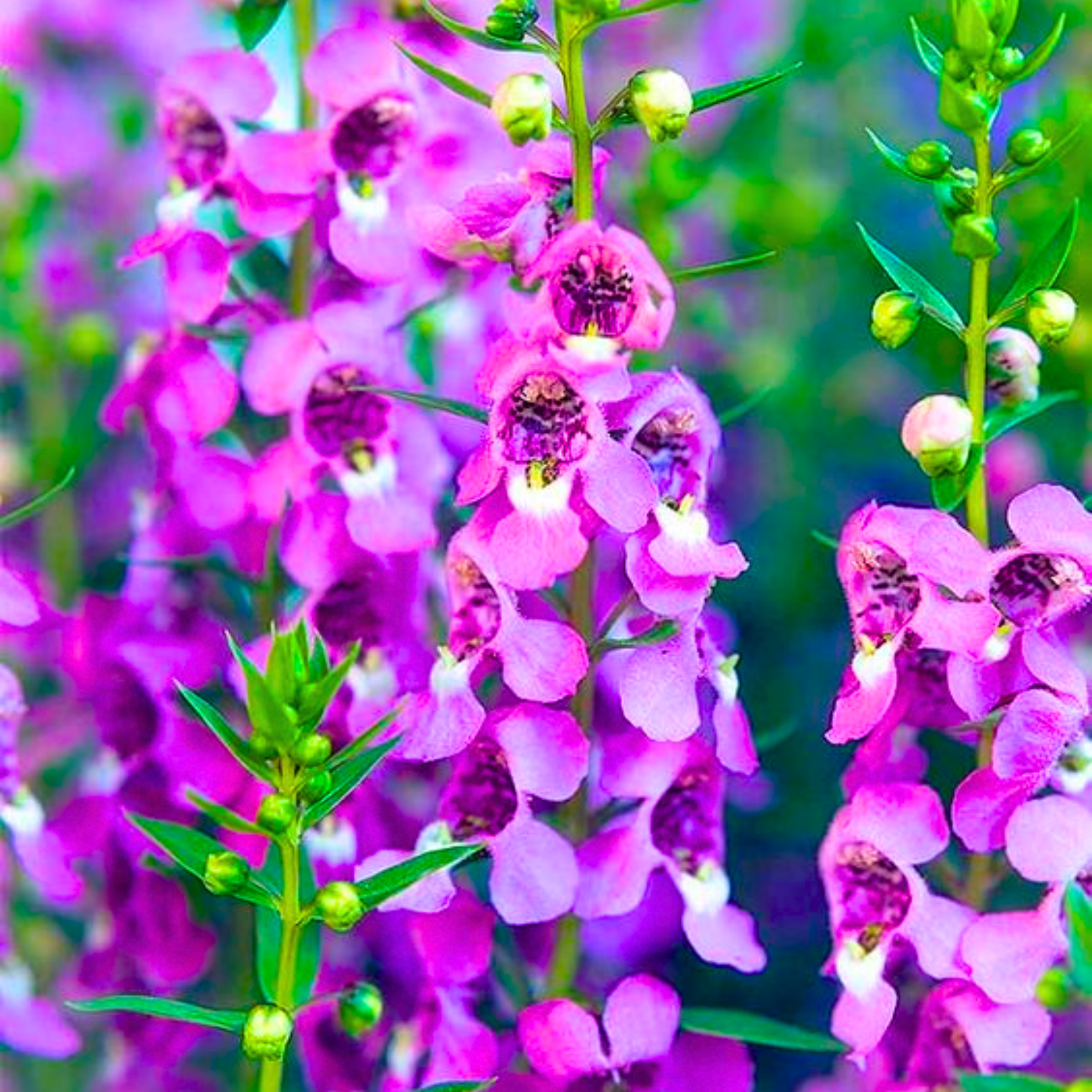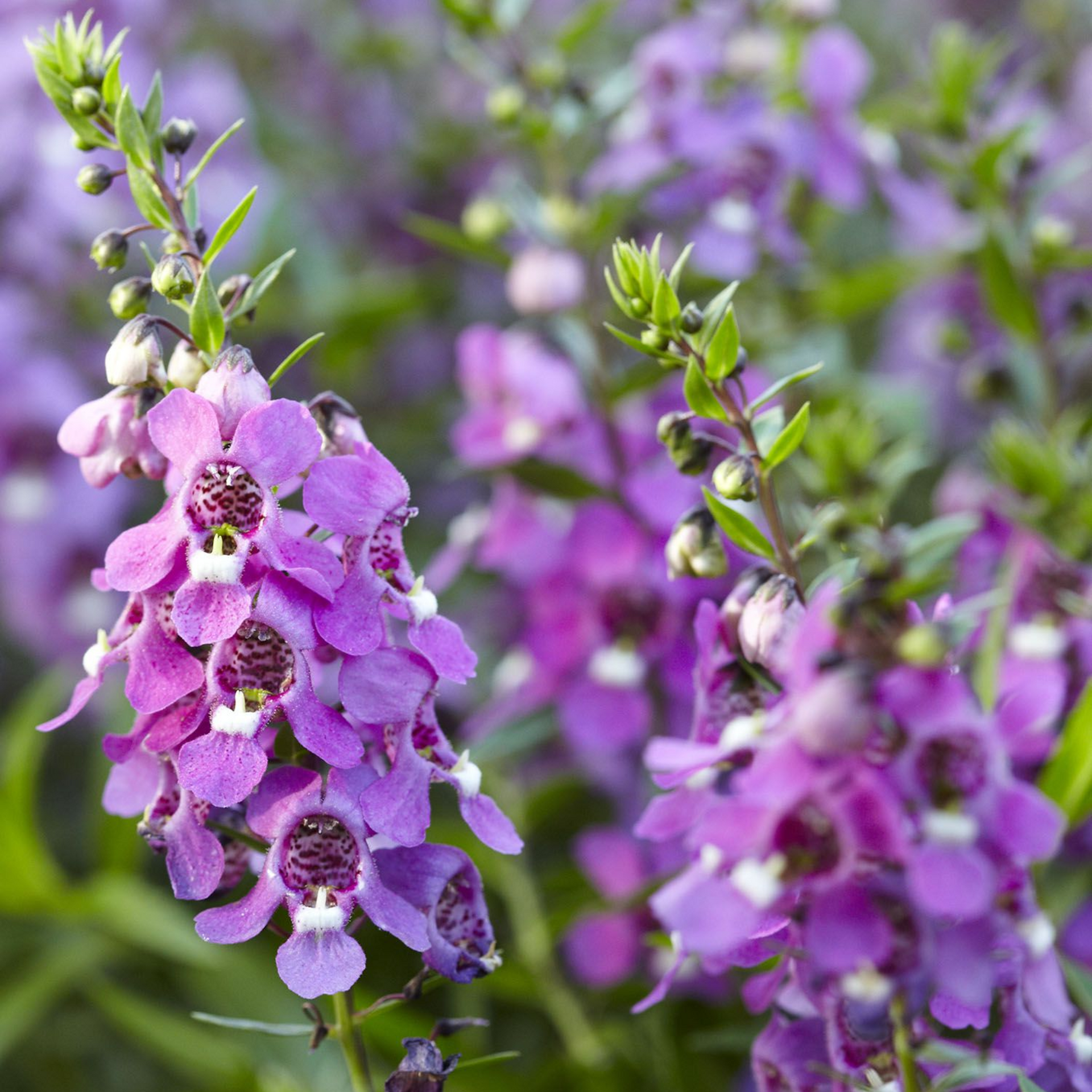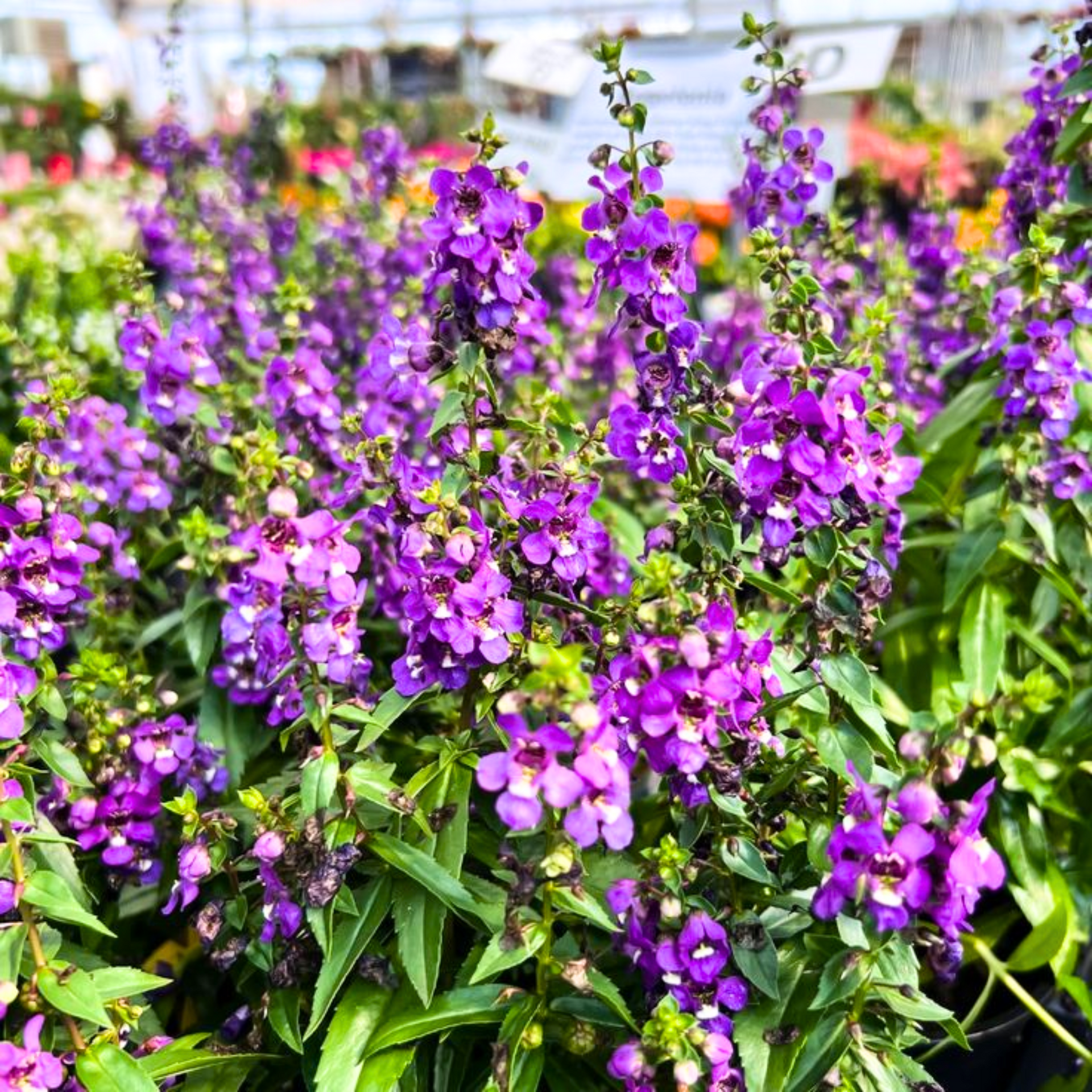



Angelonia purple flower live healthy plant
Guaranteed Safe Checkout
Green Paradise Offers Beautiful
Angelonia Purple Flower Plant
About Angelonia Purple Flower Plant
Angelonia, also known as summer snapdragon or Angelonia angustifolia, is a popular flowering plant valued for its vibrant colors and long-lasting blooms. While Angelonia plants come in various colors, the purple-flowering variety is particularly enchanting.
Here are some key characteristics and information about Angelonia purple flower plants:
Appearance:
-
Angelonia purple flowers are characterized by their beautiful, trumpet-shaped blooms that grow in dense, upright spikes or clusters.
-
The foliage is typically dark green and lance-shaped, providing a nice contrast to the vivid blossoms.
Growth Habit:
-
These plants are herbaceous perennials in warmer regions but are often grown as annuals in cooler climates.
-
They generally reach a height of 12 to 24 inches (30 to 61 centimeters) and spread about 12 to 18 inches (30 to 46 centimeters) wide.
Blooming Period:
-
Angelonia purple flowers are profuse bloomers, producing clusters of blossoms from late spring to early fall.
-
With regular deadheading (removing spent blooms), they can continue to flower throughout the growing season.
Flower Color and Varieties:
-
As the name suggests, Angelonia purple flowers exhibit various shades of purple.
-
The hues can range from deep violet to lavender, offering a range of options for gardeners and landscapers.
-
In addition to purple, there are also Angelonia varieties available in colors like white, pink, and blue.
Light and Temperature Requirements:
-
Angelonia plants thrive in full sun to partial shade.
-
They prefer warm temperatures and are more commonly cultivated in USDA hardiness zones 9-11.
-
However, they can be grown as annuals in cooler regions.
Soil and Watering:
-
Angelonia plants prefer well-draining soil that is fertile and rich in organic matter.
-
They require regular watering to keep the soil evenly moist, but it's important to avoid overwatering, as excessive moisture can lead to root rot.
Maintenance:
-
Angelonia plants are generally low-maintenance.
-
They don't require excessive pruning, but you can pinch back the stems lightly to promote bushier growth.
-
Regular deadheading helps encourage continuous blooming.
Landscaping and Uses:
-
Angelonia purple flowers are popular choices for flower beds, borders, containers, and hanging baskets.
-
They add vertical interest to gardens and work well as accent plants.
-
Their tolerance to heat and humidity also makes them suitable for landscapes with challenging growing conditions.
Attractiveness to Pollinators:
-
The nectar-rich blooms of Angelonia plants attract bees, butterflies, and other pollinators, making them beneficial for supporting local ecosystems.
Companion Planting:
-
Angelonia purple flowers can be complemented with other annuals and perennials, such as petunias, marigolds, salvias, and zinnias, to create visually appealing flower combinations.
Remember, specific care instructions and suitability may vary depending on your location and climate. It's always a good idea to consult with local gardening resources or nurseries for the best advice on growing Angelonia purple flower plants in your area.
How To Grow Angelonia Purple Flower Plant
Angelonia, also known as summer snapdragon, is a beautiful flowering plant that is relatively easy to grow. The purple variety adds a vibrant pop of color to your garden.
Here are some general guidelines on how to grow Angelonia purple flower plants:
Climate and Sunlight:
-
Angelonia thrives in warm climates and prefers full sun.
-
It requires at least 6-8 hours of direct sunlight per day.
-
Make sure your region's climate is suitable for growing Angelonia.
-
It is typically grown as an annual in colder regions but may survive as a perennial in warmer zones.
Soil Preparation:
-
Angelonia prefers well-draining soil with a slightly acidic to neutral pH (around 6.0-7.0).
-
To improve the soil's fertility and drainage, add organic matter similar to compost.
Planting:
-
Angelonia can be grown from seeds or transplants.
-
If you choose to start from seeds, sow them indoors about 8-10 weeks before the last frost date in your area.
-
If using transplants, purchase healthy seedlings from a reputable nursery.
-
Plant them in the garden bed or containers after all danger of frost has passed and the soil has warmed up.
-
Space the plants about 10-12 inches apart to allow for good air circulation.
Watering:
-
Water the plants regularly, especially during dry spells.
-
Keep the soil moist but not sopping wet.
-
Angelonia is relatively drought-tolerant once established but still requires adequate water to thrive.
Fertilizing:
-
Apply a balanced, slow-release fertilizer or a water-soluble fertilizer for flowering plants according to the package instructions.
-
Repeat the fertilizer application every 4-6 weeks during the growing season to promote healthy growth and abundant blooms.
Pruning and Deadheading:
-
Angelonia plants benefit from regular pruning to encourage bushier growth and prolong flowering.
-
Pinch back the tips of the stems when the plants reach about 6 inches in height to promote branching.
-
Remove spent flowers (deadheading) regularly to encourage continuous blooming.
Pests and Diseases:
-
Angelonia is generally resistant to most pests and diseases.
-
still, keep an eye out for common theater pests like aphids and spider diminutives.
-
Treat infestations instantly with insecticidal cleaner or a suitable germicide.
Winter Care:
-
In colder regions where Angelonia is grown as an annual, it will not survive freezing temperatures.
-
You can either replant new seedlings each year or treat it as an annual and replace it with other plants for the winter season.
By following these guidelines, you should be able to grow beautiful Angelonia purple flowers and enjoy their vibrant colors throughout the summer season. Remember to adjust the care instructions based on your specific climate and local conditions.




